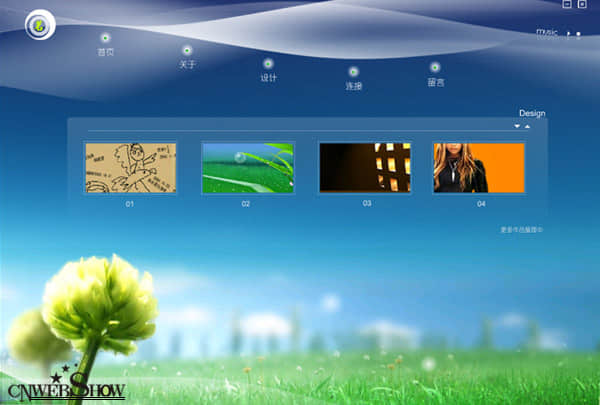Compared with print design media such as newspapers and magazines, Website Design There are differences in the form of expression, mode of operation and social functions. Web page design has its own characteristics. The main characteristics of web page art design are interactivity, multi-dimensional, integration, dynamic and the close combination of technology and art.
1、 Interactivity
Interactivity refers to the interaction between the page viewer and the network. Real time interactivity is the main reason why the Web has become a hot spot, and it is also a problem that must be considered when designing web pages. Traditional media, such as radio, TV programs, newspapers and magazines, all provide information in a linear way, that is, they are spread according to the feeling, experience and predetermined format of the information provider, which is a one-way information transmission. In the web page environment, people are no longer passive receivers of traditional media, but can also participate in the processing and publishing of information as active participants. Information release is no longer just a matter of traditional media providers, anyone can participate in this process.
2、 Multidimensional
Multidimensional refers to the fact that web pages have a variety of dimensional link forms. The emergence of hyperlinks makes the multidimensional nature of web pages more obvious. By clicking links, users can freely jump between different interfaces. Hyperlinks are the soul of www. They are composed of special text, graphics and a URL (unified resource locator). When users click a link, The browser automatically downloads the corresponding content according to the location specified by the URL. Browsers can freely jump between various main residences, which is a breakthrough in the linear way people used to receive information. The emergence of links affects the organization of the page structure, which makes the organizational structure of the web page more rich. The organizational structure of web pages mainly includes sequence structure, hierarchy structure, network structure and composite structure.
1. Sequence structure
The basic form of this structure is: the home page is a title or introduction, and the following pages are arranged in order, with links in front of and behind each other. This structure is suitable for some pages with strong order, such as online manuals, e-books, online documents, online tutorials, etc. This is the simplest form of page organization.
2. From sub structure hierarchy
The sub structure hierarchy, also known as menu structure, is an organizational form that is widely used in the design of website home page, with the advantage of strong structure. But at the same time, it should also be noted that the level of the page should not be too deep. Generally, it should be kept at two or three levels. Too many levels may cause boredom in browsing, or make visitors forget what they were looking for.
3. Reticular structure
The basic form of the mesh structure is to provide a global structure chart (navigation bar) on each page, indicating the current location and other topic links for selection, so that visitors can switch between pages with different content. Compared with the first two structure modes, it is more flexible and casual, and conforms to people's thinking habits. It is the most popular page organization mode for visitors.
4. Composite structure
Most of the more complex web pages have a combination of the above types of page organization structure. Such sites often also provide a search page that supports full-text retrieval and a general table of contents (commonly referred to as SiteMap). In this way, visitors can jump to the page they want more easily. Integration refers to the integration of plane, three-dimensional, animation, audio, video and other media elements in web design. Now the webpage has appeared a 3D simulation interface. Driven by the improvement of data compression technology and streaming technology, real-time audio and video services have also emerged on the Internet. Typical applications include online music, online broadcasting, online movies, and online live broadcasting. Therefore, the comprehensive use of multiple media is one of the characteristics of web page art design and also the future development trend.


